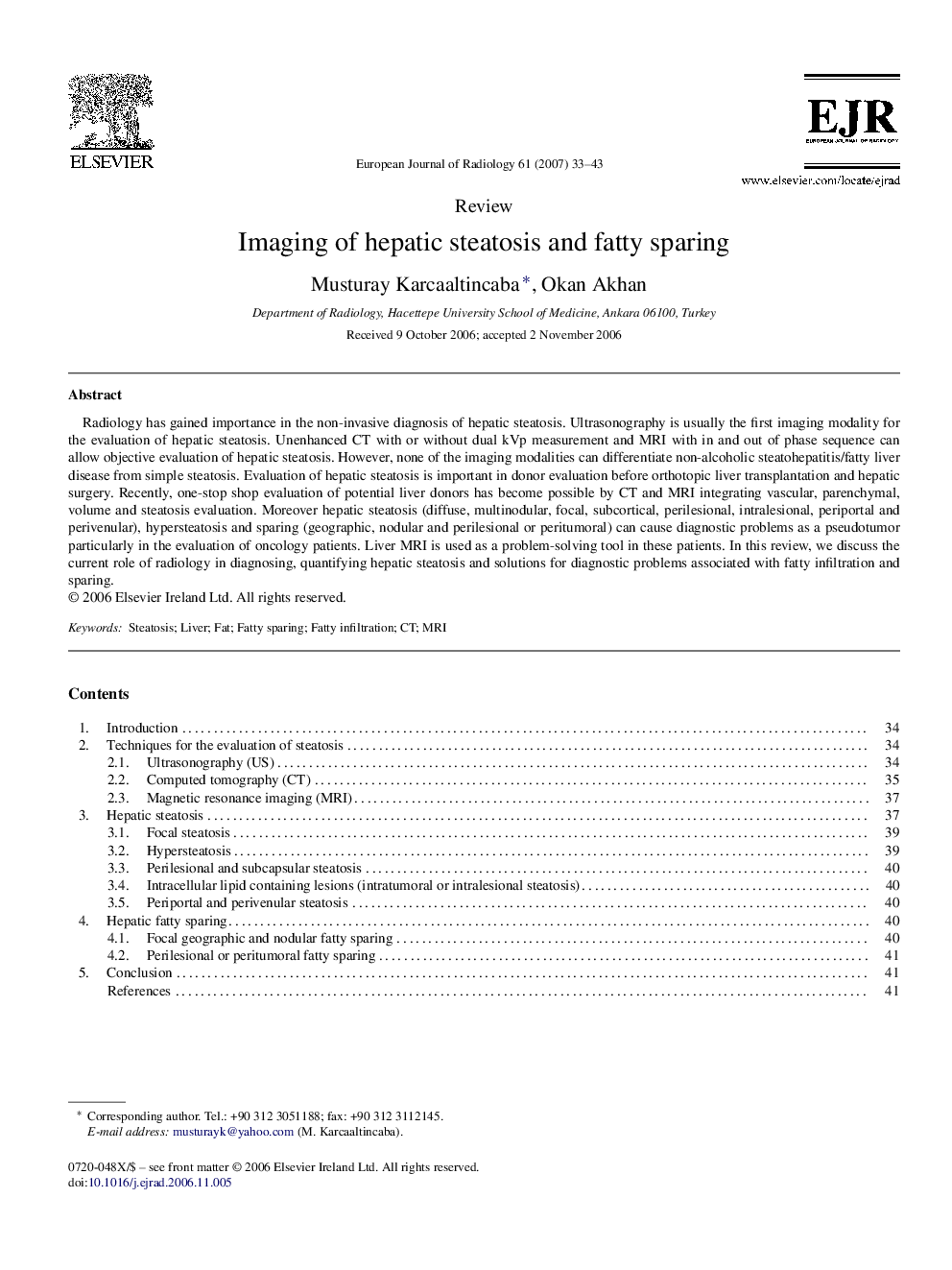| Article ID | Journal | Published Year | Pages | File Type |
|---|---|---|---|---|
| 4228337 | European Journal of Radiology | 2007 | 11 Pages |
Radiology has gained importance in the non-invasive diagnosis of hepatic steatosis. Ultrasonography is usually the first imaging modality for the evaluation of hepatic steatosis. Unenhanced CT with or without dual kVp measurement and MRI with in and out of phase sequence can allow objective evaluation of hepatic steatosis. However, none of the imaging modalities can differentiate non-alcoholic steatohepatitis/fatty liver disease from simple steatosis. Evaluation of hepatic steatosis is important in donor evaluation before orthotopic liver transplantation and hepatic surgery. Recently, one-stop shop evaluation of potential liver donors has become possible by CT and MRI integrating vascular, parenchymal, volume and steatosis evaluation. Moreover hepatic steatosis (diffuse, multinodular, focal, subcortical, perilesional, intralesional, periportal and perivenular), hypersteatosis and sparing (geographic, nodular and perilesional or peritumoral) can cause diagnostic problems as a pseudotumor particularly in the evaluation of oncology patients. Liver MRI is used as a problem-solving tool in these patients. In this review, we discuss the current role of radiology in diagnosing, quantifying hepatic steatosis and solutions for diagnostic problems associated with fatty infiltration and sparing.
